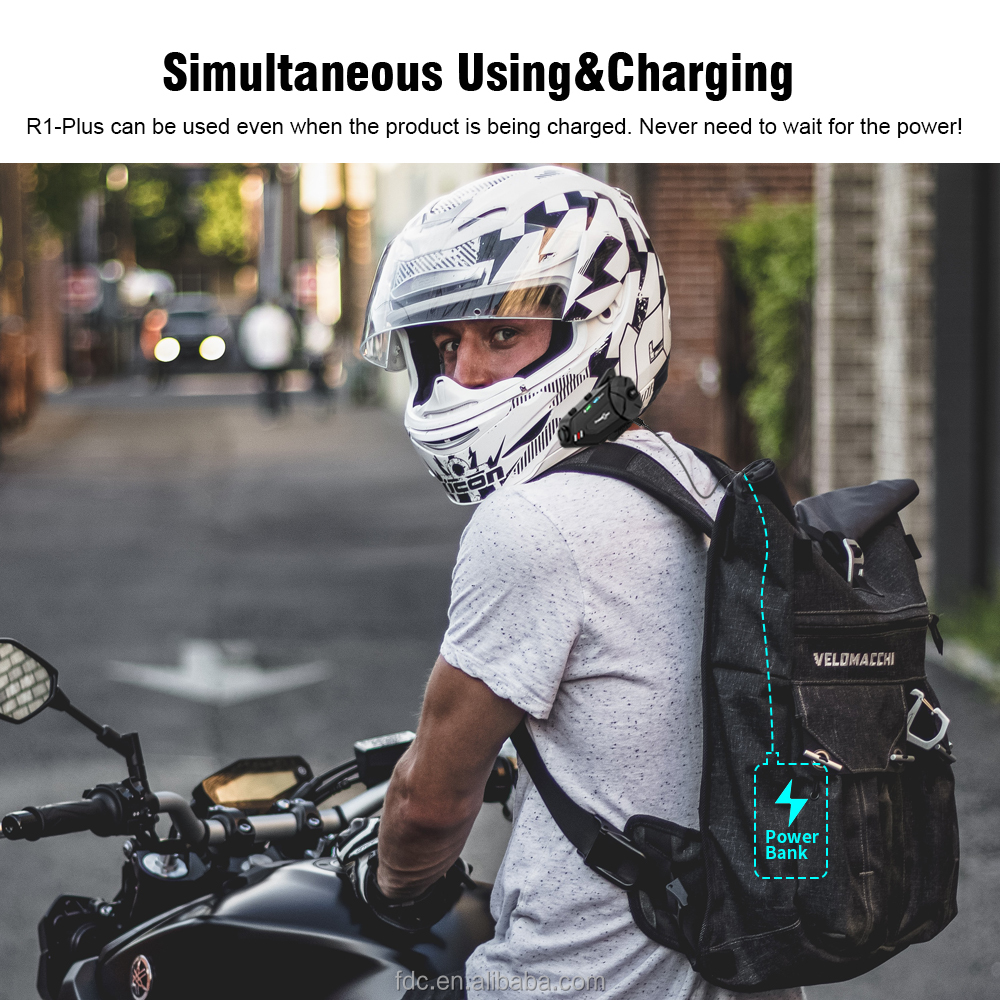Bicycle Riding vs. Motorcycle Riding: Differences in Headphone and Walkie-Talkie Function Requirements

Bicycle Riding vs. Motorcycle Riding: Differences in Headphone and Walkie-Talkie Function Requirements
Bicycle riding and motorcycle riding differ fundamentally in speed, protection intensity, and usage scope, which directly leads to distinct differences in their functional requirements for headphone walkie-talkies (including helmet-integrated devices). The former focuses on “lightweight design, safety awareness, and short-range convenient interconnection,” while the latter emphasizes “strong noise reduction, high protection, and long-range stable collaboration.” The specific differences are as follows:
Bicycle riding typically has a speed of no more than 40km/h, mainly for short-distance commuting, leisure riding, or small-team mountain adventures. The scene risks are dominated by low-speed collisions and bumpy road conditions. Therefore, the primary requirements for headphone walkie-talkies are to ensure riding safety and wearing comfort. In terms of safety awareness, bicycle riders often wear half-helmets or no helmets. Headphones must adopt an open design (such as bone conduction or open speakers) that does not block the ear canals, allowing clear perception of environmental sounds like vehicle horns and pedestrian reminders to avoid dangers caused by isolating external sounds. In terms of device form, it needs to be extremely lightweight (total weight controlled within 100g), worn stably without shaking, able to withstand vibration impacts on bumpy roads such as mountain riding. Meanwhile, it should be easy to install and remove without affecting the fit of riding helmets or caps. For communication needs, bicycle riding is mostly for small-team collaboration of 2-5 people, requiring no complex functions—only supporting short-range interconnection within 300 meters, with Bluetooth teaming or simple walkie-talkie functions. The operation logic must be concise, supporting one-key call answering and navigation voice switching, which can be easily operated even with riding gloves to avoid distracting attention. In terms of protection and battery life, IPX5-level water and sweat resistance is sufficient to cope with rain and riding sweat, and a single battery life of more than 8 hours can cover daily commuting or single-day short-distance riding needs; emergency fast charging is more practical. For noise reduction needs, due to the low speed, only basic wind noise filtering is required to clearly receive navigation and short-distance calls, without the need for complex noise reduction algorithms.
Motorcycle riding generally has a speed of 60-120km/h, often involving long-distance motorcycle trips and cross-regional team travel, facing multiple challenges such as high-speed wind noise, engine noise, and complex road conditions. Thus, the requirements for the performance, protection, and stability of headphone walkie-talkies are more stringent. In terms of protection and adaptation, motorcycles are mostly equipped with full-face helmets or modular helmets. The device shell must be made of impact-resistant ABS or carbon fiber materials, with hidden cables to avoid hooking helmet components, and it should be suitable for installation in the enclosed space of the helmet. The protection level must reach IPX6 or above to resist heavy rain and sand; for long-distance motorcycle travel scenarios, it also needs to support operation at -20℃ to prevent battery failure in extreme environments. Noise reduction capability is one of the core demands. Strong wind noise and engine noise generated during high-speed driving will seriously interfere with communication. Therefore, it must be equipped with ANC active noise reduction technology + exclusive wind noise filtering algorithm, which, combined with the enclosed environment of the full-face helmet, can isolate noise effectively. The microphone must be equipped with a wind shield and ENC noise reduction technology to ensure clear calls without noise during high-speed riding. For communication needs, motorcycle teams usually consist of 5-20 people and often travel in mountainous areas or no-signal sections. They need to support long-distance interconnection of more than 1 kilometer, preferably adopting Mesh ad-hoc networking technology to achieve stable communication without relying on base stations. At the same time, it should have multi-channel switching and group management functions, support cross-brand compatibility, and preset emergency channels to meet the collaborative scheduling needs of the team. In terms of battery life, a single charge must last more than 15 hours with a standby time of no less than 3 days, supporting USB-C fast charging (fully charged within 2 hours); some high-end models also need to support spare battery replacement to adapt to the long-term use needs of long-distance motorcycle travel. In addition, motorcycle riding has more extensive additional function requirements, such as navigation projection, tire pressure monitoring reminders, automatic collision evidence preservation (with camera function), and vehicle-machine interconnection, which can further improve riding safety and convenience.
The essential difference in their needs is an extension of riding scene risks and usage scenarios: the core of bicycle riding headphones is “not interfering with safety awareness, being lightweight and practical,” with all functions centered on safety and convenience in low-speed environments; motorcycle riding headphones focus on “coping with high-speed extreme environments and ensuring stable collaboration,” mainly solving the problems of high-speed noise reduction, long-distance communication, and adaptation to extreme environments to meet the complex needs of long-distance and team travel.

